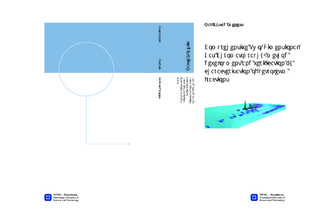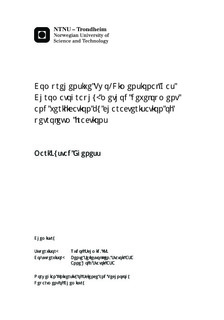| dc.description.abstract | AbstractComprehensive two-dimensional gas chromatography is a multidimensional separation technique. A sample is separated by two properties on two different columns, typically by carbon number and polarity. The two columns are connected by a modulator. The modulator is responsible for collection of three to four fractions of each 1st column separation peak, condensation of the fractions, and introducing them as a sharp narrow band onto the 2nd column. It is a continuous process of condensation of succeeding 1st column fractions and transfer to the 2nd column. The individual separations are sewn together by the software to produce a two-dimensional chromatogram. The abscissa displays the carbon number separation and the ordinate axis show the separation of polar compounds.Pre-set parameters such as carrier gas, gas velocities, detector temperatures, and column set were kept on recommendation by the installation contractors. Method development and optimisation was performed by exploring injection volume, oven temperature programs, and modulator time parameters. Hydrocarbon standards and petroleum fractions were analysed for determining the optimal parameter values. The result was two methods, one recommended for atmospheric gas oil (AGO) analyses and another for vacuum gas oil (VGO) analyses. Injection volumes of 0.015 to 0.002 µL gave low risk of column overload while still maintaining the abundance of compounds of low concentration. Temperature programmes of constant ramps gave good separation. A compromise between excellent separation and time of analysis resulted in using temperature ramps of 4.5 oC/min with a start and final temperature of 50 oC and 340 oC, respectively, for AGOs, and 3.5 oC/min with a start and final temperature of 150 oC and 340 oC, respectively for VGOs. A modulation time of 8000 ms and a hot jet duration of 500 ms proved to give good correlation between the 1st separation s peak widths and the time needed for 2nd dimension separation. Straight run and processed petroleum fractions were analysed by the optimised methods. Constructed templates for dividing the sample s polarity distribution into groups gave a distribution of volume response of all the compounds within the defined groups. The hydrocarbon analyses of the petroleum fractions were straight forward; volume responses were directly proportional to weight percent of the sample. The hydrocarbon standards gave approximately the same response factor. The same did not apply for sulphur analysis. The standards responses were not very reproducible, and the response factors were not similar for the polarity classes. Identification of sulphur compounds in AGOs and VGOs is possible although quantification is not recommended at the present. The methods showed to give good separation of both AGOs and VGOs. Although further optimisation especially of sulphur analysis, is highly encouraged. | nb_NO |

